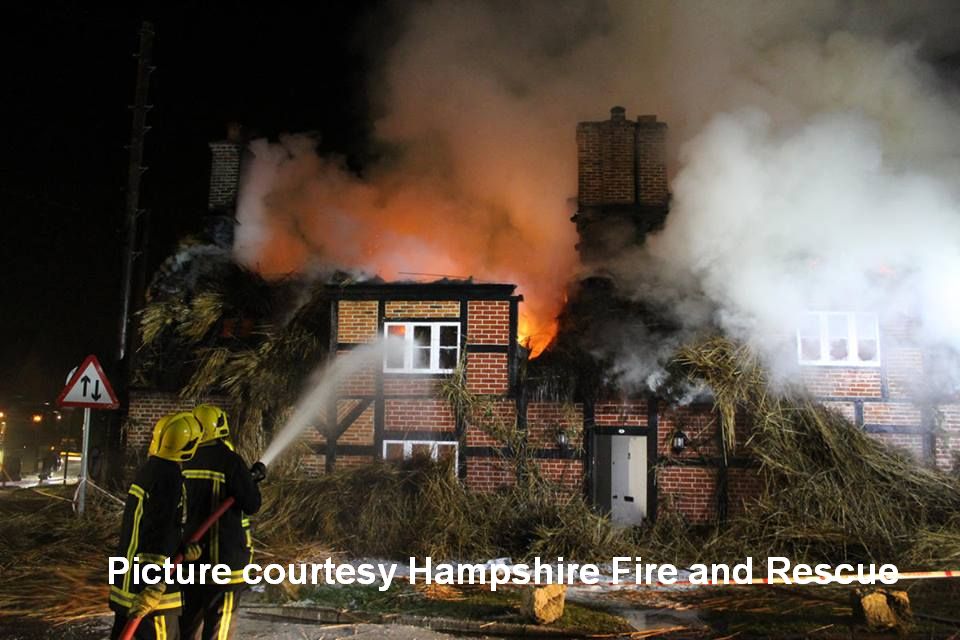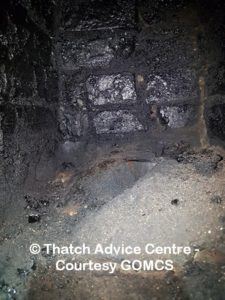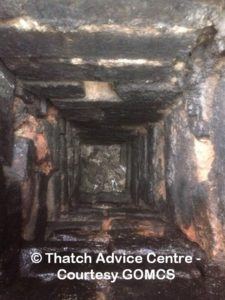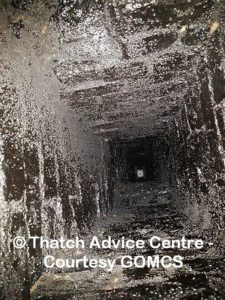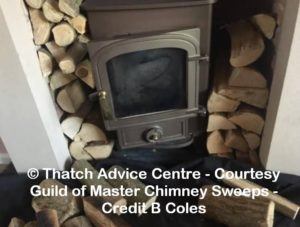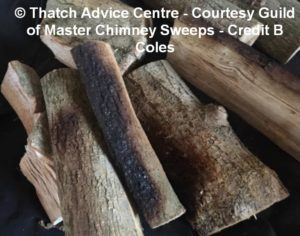Chimney Fires and Ejected Embers
All the recent investigation into the causes of thatch fires has pointed to the major cause being chimney fires and ejected embers. We thought we should share some points and add some more information on chimney fires and how to reduce them.
What is a Chimney Fire
A chimney fire is when material in the chimney, tar/creosote, catches alight and burns very strongly at heat for a period of time. This causes sparks to be emitted from the chimney pot, often pictures showing something which looks a bit like a firework. Who has heard the noise from a chimney fire? It is a sound of a roaring fire echoing up the chimney. Something to be avoided at all costs with thatch, for obvious reasons. Statistics show that the peak season for chimney Fires is January – March. HETAS also say that over 40% of chimney fires take place around this time.
Not all chimney fires are noticed but often they can have more devastating consequences, not just as a fire risk to the thatch but to the unseen fabric of a chimney lining or actual brickwork.
After a chimney fire we always recommend that the chimney and any lining are professionally inspected.
So it is really important to avoid a chimney fire. See below some pictures of debris in chimneys.
Avoiding a chimney fire
All the usual sensible advice from various sources:-
- Check your chimney (CCTV) and lining
- Sweep the chimney regularly including during the burning season especially if wood burning– remove debris/tar including any bird’s nest. If nests burn they can result in very risky larger embers falling on the thatch.
To reduce the chance of deposits:-
- Burn good seasoned wood
- Burn dry wood minimum 20% moisture
- Don’t burn rubbish or tanalised woods
- Don’t slumber a woodburner over-night.
- Burn woodburners/multi-fuel stoves per manufacturers’ instructions (a temperature gauge can help with checking that you are burning at optimum heat)
All the up to date relevant advice applies with regard to Thatch Fire Safety.
Chimney Fires and the Guild of Master Chimney Sweeps
We appreciate input on this topic from Steven Howard, Technical Director with our Associates at the Guild of Master Chimney Sweeps
“We still read about the devastating effects of fires in thatch properties often as a result of ejected embers and chimney fires. There has been much input from the industry in recent years addressing these and other causes, with some associations including The Guild of Master Chimney Sweeps offering dedicated Historic and Thatch Property Chimney Sweeping Courses. It cannot be stressed enough how important regular chimney sweeping is and also how important the chimney sweep actually understands the task in hand. The chimney sweep is responsible to be adequately qualified, insured and equipped to undertake this type of work, and moreover, ensure the correct paper trail/evidence of the work carried out is recorded, especially as most insurance providers now insist on such information/evidence.
Likewise the end user also needs to be adequately educated on the importance of :- regular chimney sweeping, why only dry wood <20% moisture should be used, the importance of using authorised fuels ,the dangers of slumbering or over firing the appliance, and ensuring the correct chimney termination/cowl is fitted.
The list can go on and on, but between us all, we really can help to make a difference and not only save lives, but also save our Thatched Heritage.”
Many thanks to the Guild. Proof that we are all #workingtogether with the same good advice.
If you have a chimney fire
- Dial 999 and call the fire service
- Close down ventilation on any solid fuel appliance
- Deploy any fire suppressants/extinguish fire in grate
- Make certain you have access for fire service vehicles and personnel
- Vacate the property as soon as possible.
Reducing Chimney Fire risks and making progress
Our mantra of #workingtogether is making great progress in our mission to inform people how to reduce the risk fire in thatch. Reducing chimney fires is a large part of that process.
Education and sharing correct material is, in our opinion, the best way forward so please share all relevant information with any friends, colleagues, associates, neighbours or anyone you know who may benefit from this help. Join us on social media and sign up for our free bi annual newsletter because together we can influence change in reducing chimney and thatch fire numbers.
And finally
It has been noticed that many adverts show woodburners with wood stacked around the stove. This is not recommended and we, our chimney sweep friends and insurers, are concerned at this dangerous practice. See the pictures below, be aware and make sure you stay safe


